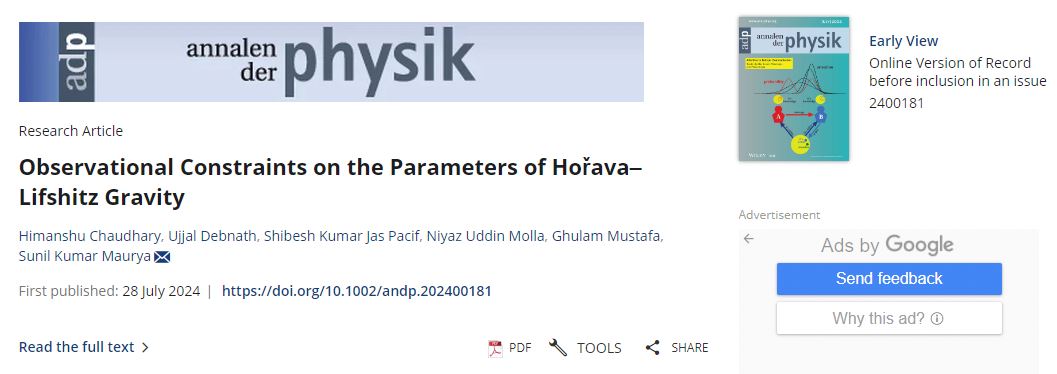Abstract
This study investigates the accelerated cosmic expansion within the Hořava–Lifshitz (HL) Model. To constrain the cosmological parameters of this model, 17 Baryon Acoustic Oscillation points, 31 Cosmic Chronometer points, 40 Type Ia Supernovae points, 24 quasar Hubble diagram points, and 162 Gamma Ray Bursts points, along with the latest Hubble constant measurement (R22) are incorporated. rd is treated as a free parameter to extract H0 and rd using late-time datasets, aiming for optimal fitting values in each model. Treating rd as free improves precision, reduces bias, and enhances dataset compatibility. The obtained values of H0 and rd are compared to the ΛCDM model, showing consistency with previous estimates from Planck and SDSS studies. The Akaike Information Criterion (AIC) and Bayesian Information Criterion (BIC) favor the Hořava–Lifshitz model, with the ΛCDM model having the lowest AIC. Additionally, ΔAIC and ΔBIC analyses are conducted to assess model preference. Validation using the reduced χred2 statistic indicates satisfactory fits for the Hořava–Lifshitz model, while recognizing ΛCDM as the preferred model. Extensions of the analysis warrant further investigation.

